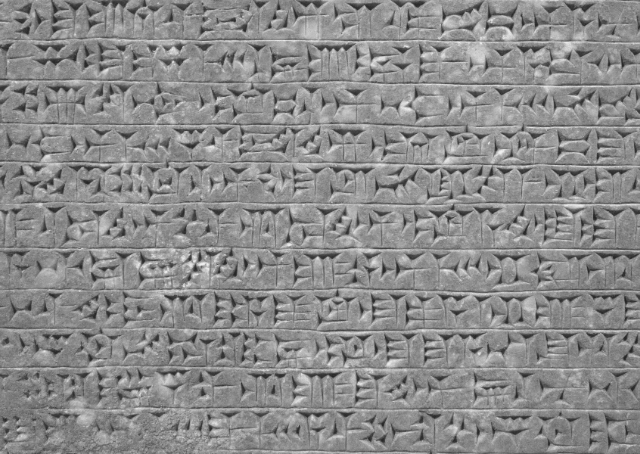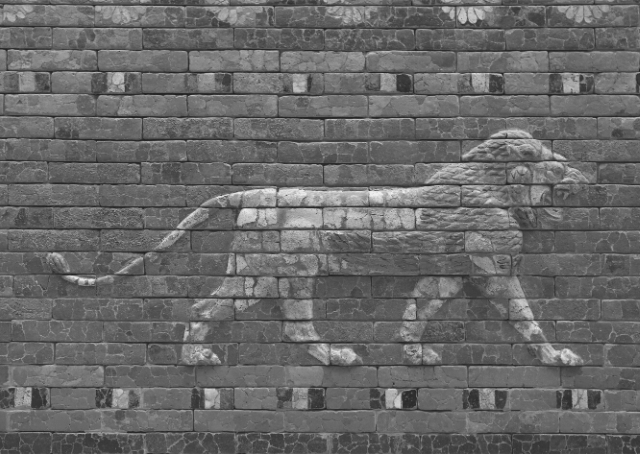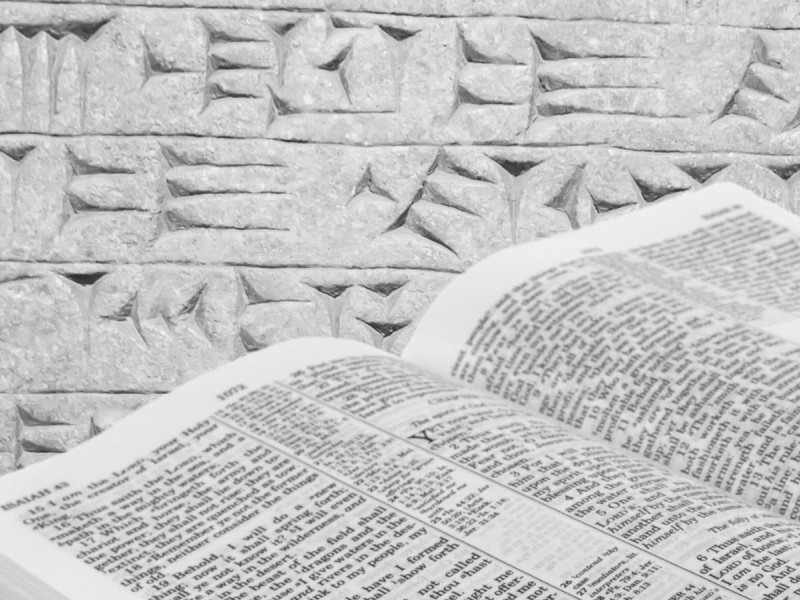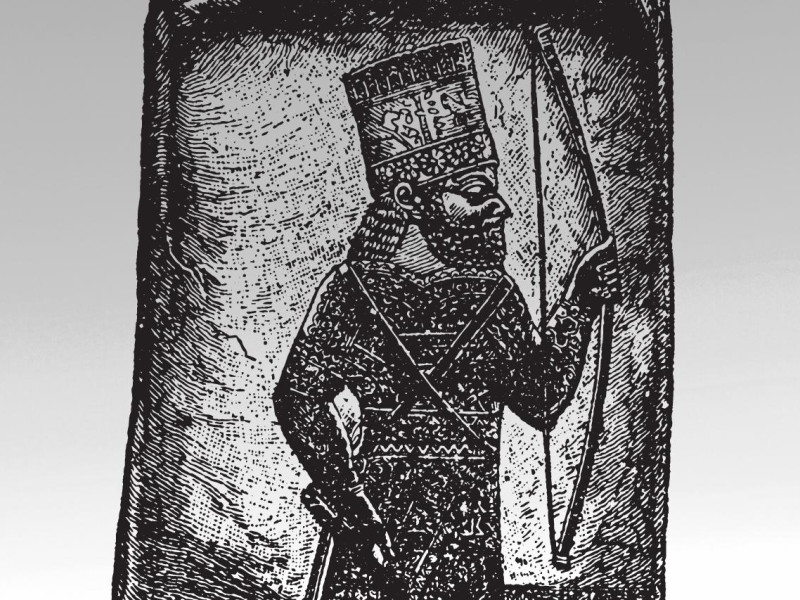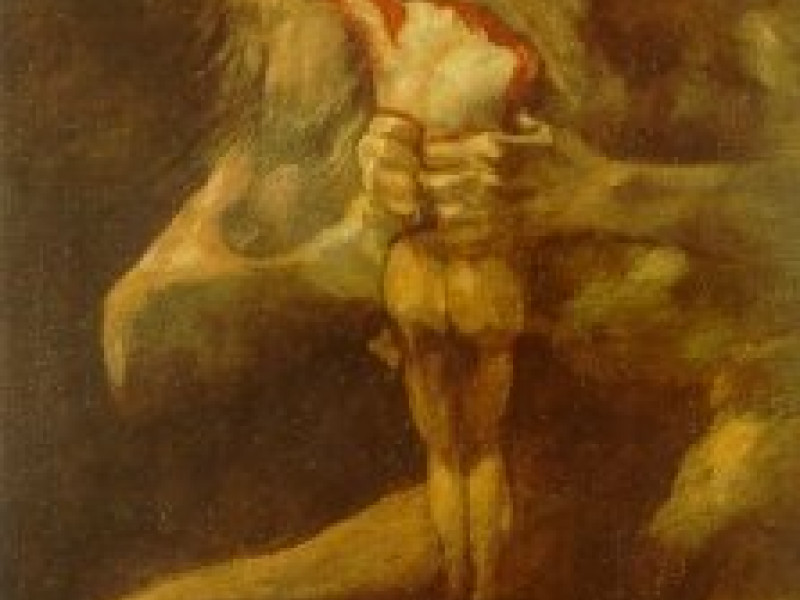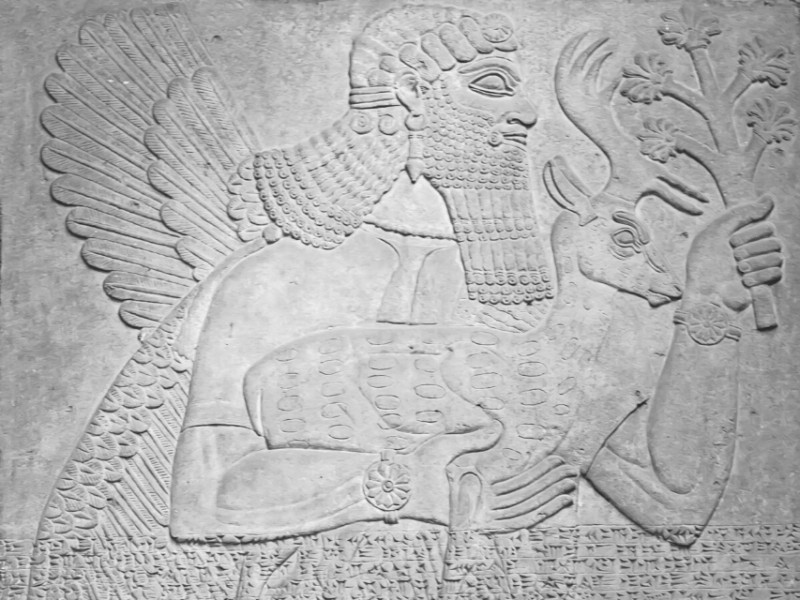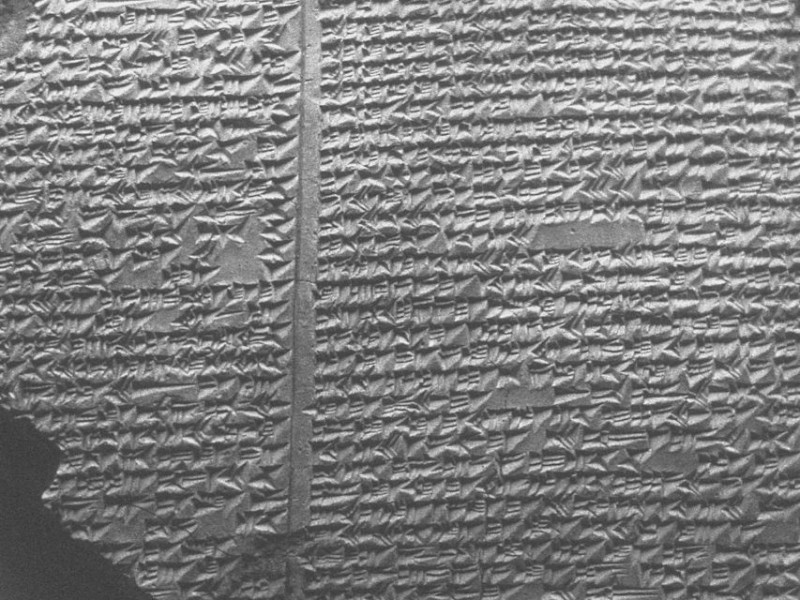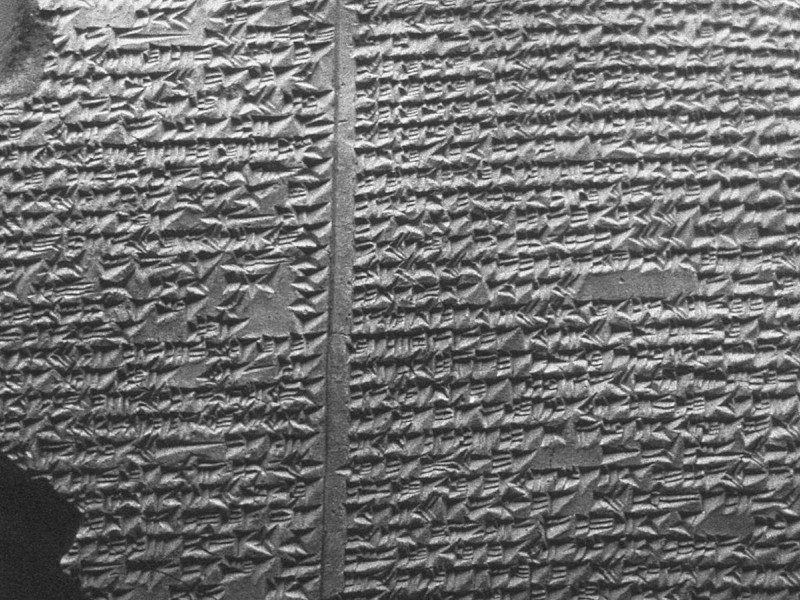Enuma Elish | Babylonian Take on the Creation Story
Of all the ancient writings in cuneiform, few have garnered general interest as the Babylonian creation myth Enuma Elish.
Aside from linguistic studies about it, there are lots of analyses on its theogonic and cosmogonic views. It also became very controversial because of its similarities to the Bible, especially the Book of Genesis.
What is The Enuma Elish?
The Enuma Elish, also known as The Seven Tablets of Creation, is the Babylonian creation myth. It was discovered in fragmented form in the ruined Library of Ashurbanipal at Nineveh (now Iraq) by English archaeologist Austen Henry Layard in 1849.
The word “Enuma Elish” translates to the words “When Above,” which is the epic’s first opening line. The epic had about a thousand lines and was recorded in Old Babylonian script on clay tablets. It was one of the most significant sources that revealed how Babylonians believed the world was created. For thousands of years, the epic was recited in the New Year festival in Babylon.
According to the myth, the creation resulted from a battle between gods. The creation of man was to serve the Mesopotamian deities. Considered one of the oldest stories globally, the Enuma Elish was preserved, studied, and interpreted for many years.
Interestingly, the epic doesn’t have a meter or rhyme, which is usually done when creating epics. The style and context of the epic indicate the theological thoughts of Babylon during the first millennium. They were very religious and placed gods at the head of their civilizations.
When Was The Enuma Elish Written?
The text’s date is believed to be in the late 2nd millennium B.C. However, other experts say it was even earlier or the time of Hammurabi. Several copies of the tablet exist and have been found in various parts of Iraq.
The discovery of the Enuma Elish in the 19th century had a significant impact on ancient writing’s historical approach, especially with the Bible. Many historians also saw uncanny similarities connecting the Mesopotamia creation story to the creation story in the Bible and the Greek writer Hesiod’s account of Titans’ battle.
They even called Enuma Elish the “Babylonian Genesis,” which many prompt historians to think that maybe Genesis was simply a later version of the Babylonian story.
In 1876, Assyriologist George Smith published the work with the title Chaldean Genesis because of its many similarities in Genesis’s book. The book was heavily illustrated and contained a summary of Enuma Elish. George Smith was also the Assyriologist who discovered the Babylonian epic Gilgamesh. All of which he found on his excavations in Nineveh.
In 1902, an Assyriologist and archaeologist named Leonard William King, who worked in the British Museum, conducted excavations in Nineveh. He published the Enuma Elish epic’s completed version. He succeeded in finding almost all the fragments, except for the fifth tablet with several missing gaps to complete the story. Today, you can find the fragments at the British Museum.
Today many historians argue for the basis of the story of Enuma Elish. Some believe it was of Amorite origin, with the last two tablets only added during the Kassite period. The literature was recorded in Akkadian, but it contained Kassitic words, which made many scholars believe it was the foundation of the Kassite era’s Babylonian culture.
Sumerian influences are also evident in the epic. You can see many Sumerian words in the text. The text is also written in a way intended for reading, not oral transmission. The epic also contains wordplays that the literate few can only understand.
Tale of the First Two Deities
The tale begins with a story of the first two gods. It introduces primordial entities Apsu, born from sweet fresh water and Tiamat from salty, bitter water. Together they reside in Esharra or heaven.
Apus and Tiamat’s mixture created another two new gods, Lahmu and Lahamu (literally translates to slime and mud), next Kishar and Anshar (whole earth and whole sky). From Anshar came the god Anu (sky god), and from Anu came Nudimmud or Ea (trickster god of the flowing waters).
The young gods were loud and troubled Apsu’s sleep every night, distracting him from his work. His Vizier Mummu advised him to kill the young gods, but Tiamat disagreed with this idea. Behind Tiamat’s back, Apsu started planning to destroy the younger gods.
Tiamat hears of their plan and warns her eldest son Ea. Ea ties up Mummu and kills Apsu after he puts him to sleep. He then creates a home out of his remains. His lover Damkina gives birth to Marduk, the most powerful of all the young gods.
Tiamat, who once supported the younger gods, is now enraged that they killed her mate. She asks for help from the god Quingu, her lover, who advised her to make war on the younger gods. Tiamat gives Quingu the Tablets of Destiny, and he wears it as armor. Quingu became Tiamat’s champion as she summons the force of chaos and unleashed eleven monsters to destroy the younger gods.
Ea and all the other younger gods fought with Tiamat. At first, Ea was intimidated by Tiamat and her power and admitted defeat. Before they could despair, Marduk came forward and confronted the goddess. They equipped Marduk with powerful weapons and send him off to fight Tiamat.
Marduk defeats Quingu and kills Tiamat by shooting her with an arrow that splits her into two. Using her torso, she formed the heavens with years and months as well as the sun and moon. With the lower part of her body, he created the earth with its sprawling mountains and flowing rivers. From her eyes flowed the waters of Tigris and Euphrates. Out of her corpse, Marduk creates heaven and earth. He appoints the other younger gods to duties and binds Tiamat’s monsters to his feet as trophies.
After they celebrated their victory, the gods created a throne for Marduk, where he sat down to receive sovereignty. He was given kingship for the whole universe. He became the king of the gods. Marduk consults with Ea, the god of wisdom, and they create human beings. They made Lully, the first man who helped gods with maintaining order in the world. The epic ends with a litany of Marduk’s names.
Enuma Elish Similarities in the Bible, Sumerian Cosmology, and Greek Theogony
In Genesis 1, God or Elohim creates the heavens and earth. The vision of god’s spirit hovering over the waters is thought to be derived from Enuma Elish. The similarities of this shared idea that the world begun in water are also found in early Greek. In Sumerian cosmology, ocean waters were symbols of chaos.
In both the Bible and Enuma Elish, the world was created by giving order to chaos. In both stories, the light also existed before creating the heavenly bodies sun, moon, and stars. The sequence of creation of water, land, humanity was also similar. The six days of creation also parallel with the six gods in the Enuma Elish Babylon myths. The humans were also the last creation (sixth day) as Marduk was also the sixth generation god.
In Hebrew scriptures, they saw quotes initially referring to Marduk and Enuma Elish, glorifying the Hebrew God, Yahweh. Yahweh also cut a cosmic serpent in half, just like Marduk did with Tiamat, and used the halves to create the world. A similar version found in Ancient Sumerians has Anu, Enil, and Ninurta as the main gods. These versions suggest the Enuma Elish might have also been adapted to justify the cult of Marduk in Babylon.
The formless state of the universe is also one of the primary themes in the Greek theogony of creating the world. In Greek creation myth, there emerged two gods in the form of male and female. There are also astrological aspects in the Enuma Elish. The gods and monsters could have represented the astronomical and astrological components such as the constellations and stars.
Just like the Bible, the female is depicted as the villain or the archetype of chaos. Marduk is the hero archetype, and his heroics was the climax of the story. At the same time, Tiamat was the villain whom they had to defeat. While Tiamat was the one who tried to stop Apsu from killing the younger gods, she was also the one who fought against them when they killed Apsu.
Historians often say that Enuma Elish’s sociological meaning was the triumph of patriarchy over matriarchy. Feminists would also use Tiamat as a symbol of an uncontrollable female force. In the words of Dellenbaugh’s “She who will not be held back.” During his reign in Hammurabi, history also tells that Marduk replaced many female deities with male gods. They portrayed men as partners of god and put the status of women down.
Enuma Elish is both a poem and a prayer that is intended to be recited by many. It is often considered a form of patriotic text that brings praise to Babylon’s holiness. Like the book of Genesis, which details the origins of the Hebrews through Moses and Abraham, Enuma Elish celebrates Babylon’s roots through Marduk. It highlights the region’s sacredness and explains the origins of everything in the world, including the sky, water, light, and darkness.
Many translators also believe that Enuma Elish is the work of one single writer who thought that Babylon was the world’s center. The Enuma Elish became the official ritual text recited every fourth day of the Babylonian New Year Festival. The New Year Festival would often go on for eleven days. There were offerings, sacrifices, and procession outside the city and back again. It is often called one of the oldest continually enacted Babylon myths in the world.
Interpretations and Analysis
Like other creation stories that sought to explain the beginnings of humanity and earth, Enuma Elish was written from the writer’s desire to explain the reality in which they live. With the absence of doctrine and history, ancient people might have invented stories to explain how things were. It’s also possible that the myth was true. It represents a time when supernatural forces were present in our world.
While other creation stories talked about certain aspects of the world, Enuma Elish gave the whole universe origin and order. According to the epic, the universe and all its components begin with gods. It was considered one of the literary masterpieces of Babylonian Semites. For centuries, it has been their most crucial writing work.
Unlike other ancient religious texts, the epic doesn’t talk much about the characters of the divine. It also didn’t tell anything about human beings’ divine expectations or if they have a higher purpose for human life. The epic also doesn’t explain why gods exist or where they came from. However, it suggests patterns on how humans should live their lives in imitation of the gods.
The creation myth Enuma Elish was possibly created to elevate their leader, Marduk, to God’s position by relating him to Ea. Although Marduk is the rightful king, the scribes wanted to make his kingdom something of cosmic significance.
In addition to propagating Marduk’s superiority, the Enuma Elish also intends to justify monarchy. That the kings appointed by gods exist to relieve gods of their burden, they made it clear that gods chose them to be their servants. It raised Marduk’s nature from human to God and put Babylon as the world’s most venerable place. So, essentially, Enuma Elish was one of the earliest examples of political propaganda.
The last tablet where Marduk was given fifty divine names was almost as if they replaced every other god in mythology for him. For many historians, the Enuma Elish epic was based on a Sumerian heritage tweaked to be readily accepted by the Babylonian people and its culture.
Enuma Elish is a creation epic that bears similarities with other creation myths before and after its time. But in Enuma Elish, the reader is first introduced to the Gods. They were chaotic and often at enmity with each other. It wasn’t until the last sections of the epic the hero-god Marduk appears in the story.
Marduk symbolizes the gradual peace after the chaos, the humanity, and goodness that lingered in Babylonians’ life for centuries. It is ironic because Marduk created the world through violence. He did it by dismembering his mother and using her corpse to make the sky, water, and the world. Marduk built the foundation for civilization and into the creation of religious cults. He declared the cult center as the assembly place for all the gods and calls it Babylon or “home of the great gods.”
Summary
The Enuma Elish is a Babylonian creation myth discovered in fragmented form in the ruined Library of Ashurbanipal at Nineveh by English archaeologist Austen Henry Layard in 1849.
In 1902, Leonard William King conducted excavations in Nineveh and published the Enuma Elish epic’s completed version.
The word “Enuma Elish” translates to the words “When Above,” which is the epic’s first opening line.
The epic describes a battle between the gods at the beginning of time. It ends with the defeat of Tiamat, goddess of salty waters and the world’s creation.
Enuma Elish’s discovery in the 19th century had a significant impact on ancient writing’s historical approach, especially with the Bible.
The uncanny similarities and connections of the Enuma Elish to the creation story in the Bible and the Greek writer Hesiod’s account of the battle of Titans created general interest among historians.
Enuma Elish was a religious text created to elevate Marduk by relating him to Ea. The epic is presumably one of the earliest examples of political propaganda.
For many historians, the Enuma Elish epic was based on a Sumerian heritage that was tweaked to be readily accepted by the Babylonian people and its culture.
